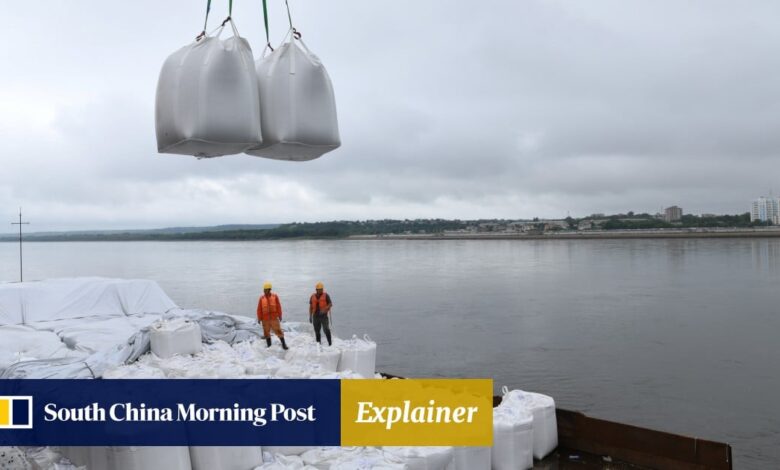China trade: 4 takeaways from September’s data as export decline ‘improved modestly’

“Export growth improved modestly compared with last month,” said Zhang Zhiwei, president and chief economist at Pinpoint Asset Management.
Exports to the Association of Southeast Asian Nations – China’s largest trading partner – contracted by 15.82 per cent last month, while September’s shipments to the United States fell by 9.34 per cent, year on year, extending a 14-month streak of continuous declines.
Exports to the European Union, meanwhile, dropped by 11.61 per cent last month, year on year.
“Exports continued to see broad-based weakness across regions and by products,” said economists at HSBC. “Global growth continues to face pressure from tighter monetary conditions while global-goods demand remains weak, relative to services.
“Exports to developed markets such as the US and EU, where much end-demand stems from, continued to fall at a faster pace.”
Export decline ‘improved modestly’, signalling China’s economic stabilisation
Export decline ‘improved modestly’, signalling China’s economic stabilisation
2. Import volumes largely unchanged despite decline
China’s imports fell for the seventh consecutive month in September after declining by 6.2 per cent, year on year, to US$221.4 billion.
Imports had fallen by 7.3 per cent in August, and Wind had predicted a fall of 5.8 per cent for September.
Import volumes remained largely unchanged, but we expect them to pick up in the near-term
“Import volumes remained largely unchanged, but we expect them to pick up in the near term as further infrastructure investment boosts commodity demand,” said analysts at Capital Economics.
“After accounting for seasonality and changes in import prices, we estimate that import volumes remained broadly unchanged in month-on-month terms. As such, the trade surplus widened last month.”
Demand for key construction commodities continued to stay resilient
HSBC economists said imports were weighed down by persistent weakness in global demand, but they highlighted signs of improvement on the back of a domestic demand recovery.
“Demand for key construction commodities continued to stay resilient. Volume imports continued to grow for items like iron ore and copper ore, while ongoing concerns around energy security have also helped to keep energy imports (coal, crude oil) buoyant,” they added.
3. Strong trade surplus
China’s total trade surplus in September stood at US$77.71 billion, up from US$68.4 billion in August.
“The strong trade surplus offers China room to manage its exchange rate,” Zhang added. “As we head into the fourth quarter, China’s trade surplus will likely stay strong.”
China can, he added, afford to keep the US dollar-yuan exchange rate stable and tolerate appreciation of the yuan against the basket of currencies in the next few months.
4. More support needed, external demand to stay weak
Analysts at Capital Economics anticipated a pullback in export volumes before long, as measures of foreign orders point to a more substantial decline in overseas demand.
They also pointed to the delayed impact of higher interest rates, which could dampen consumer spending in major export markets over the next few quarters.
“In contrast, imports are likely to pick up further in the coming months due to higher commodities demand, supported by a step up in infrastructure spending,” they said.
We expect both fiscal and monetary measures to provide ongoing support
Weak external demand means China would need to rely more on domestic demand to sustain its recovery, said analysts at HSBC.
“We expect both fiscal and monetary measures to provide ongoing support. On the fiscal side, the government continues to roll out targeted measures to support demand, such as through increased incentives for automobile consumption.
“On the monetary side, we expect the [People’s Bank of China] to maintain an accommodative stance by keeping liquidity ample to support credit growth. Additional easing measures for the property sector are also likely to help further stabilise the sector.”





